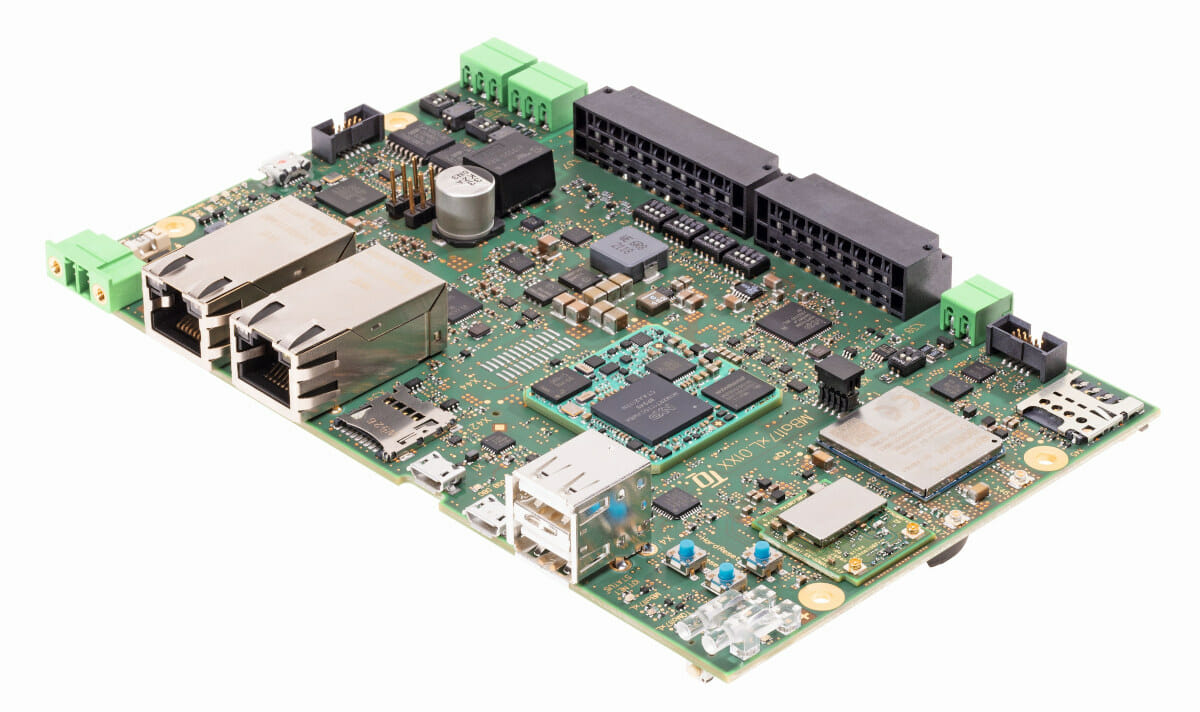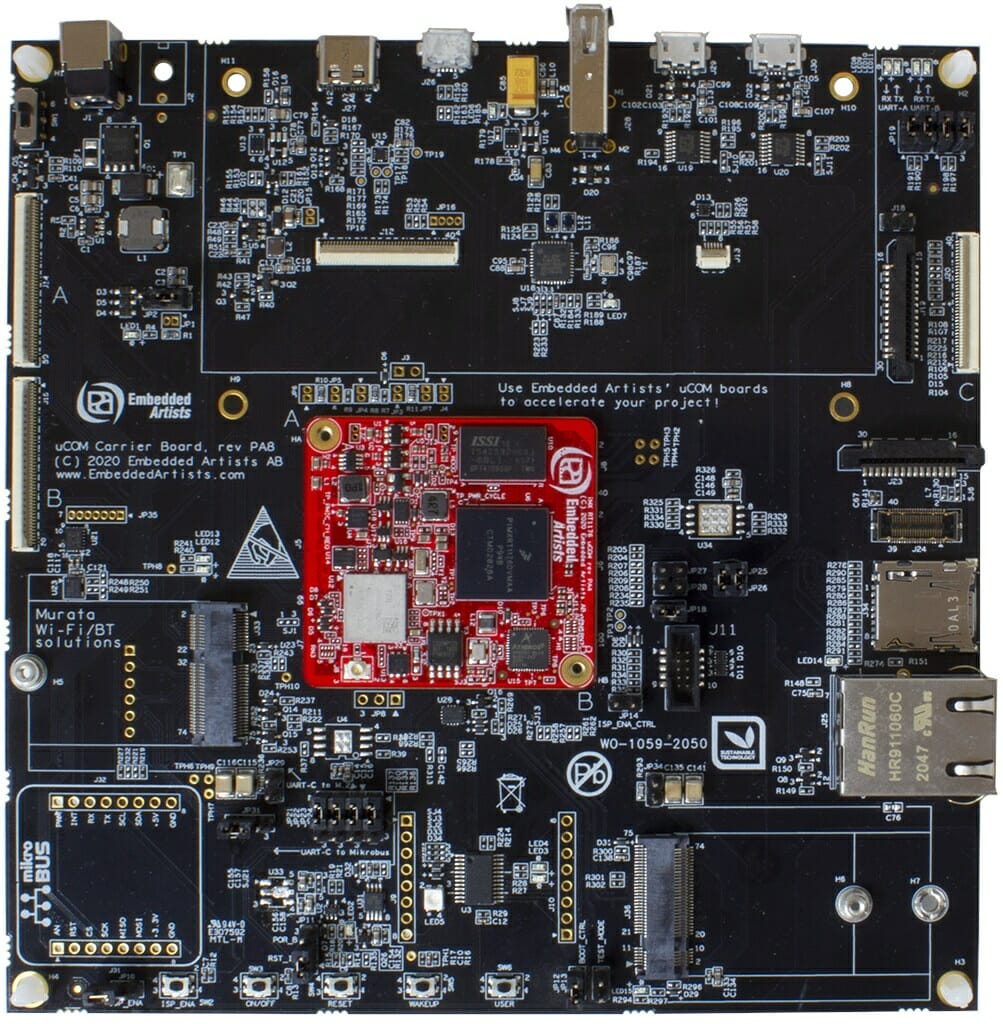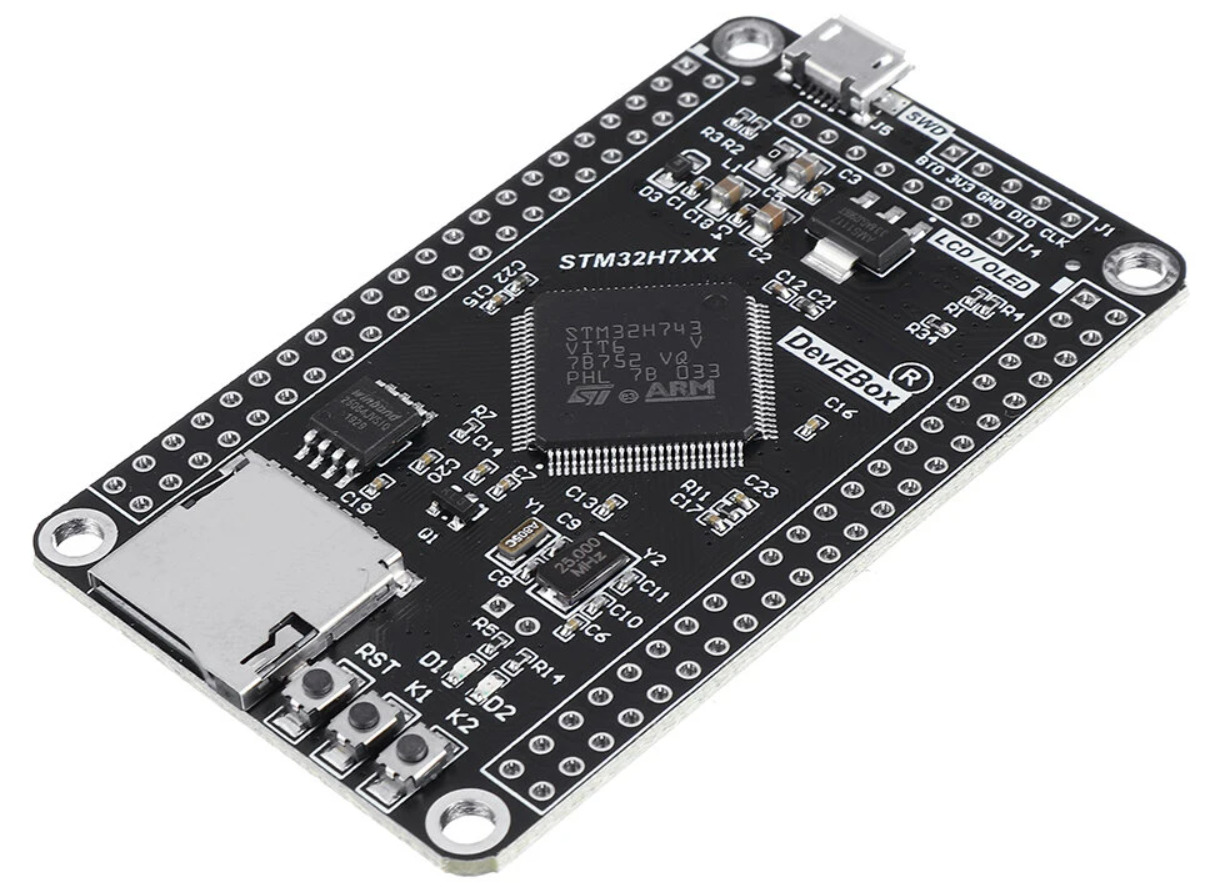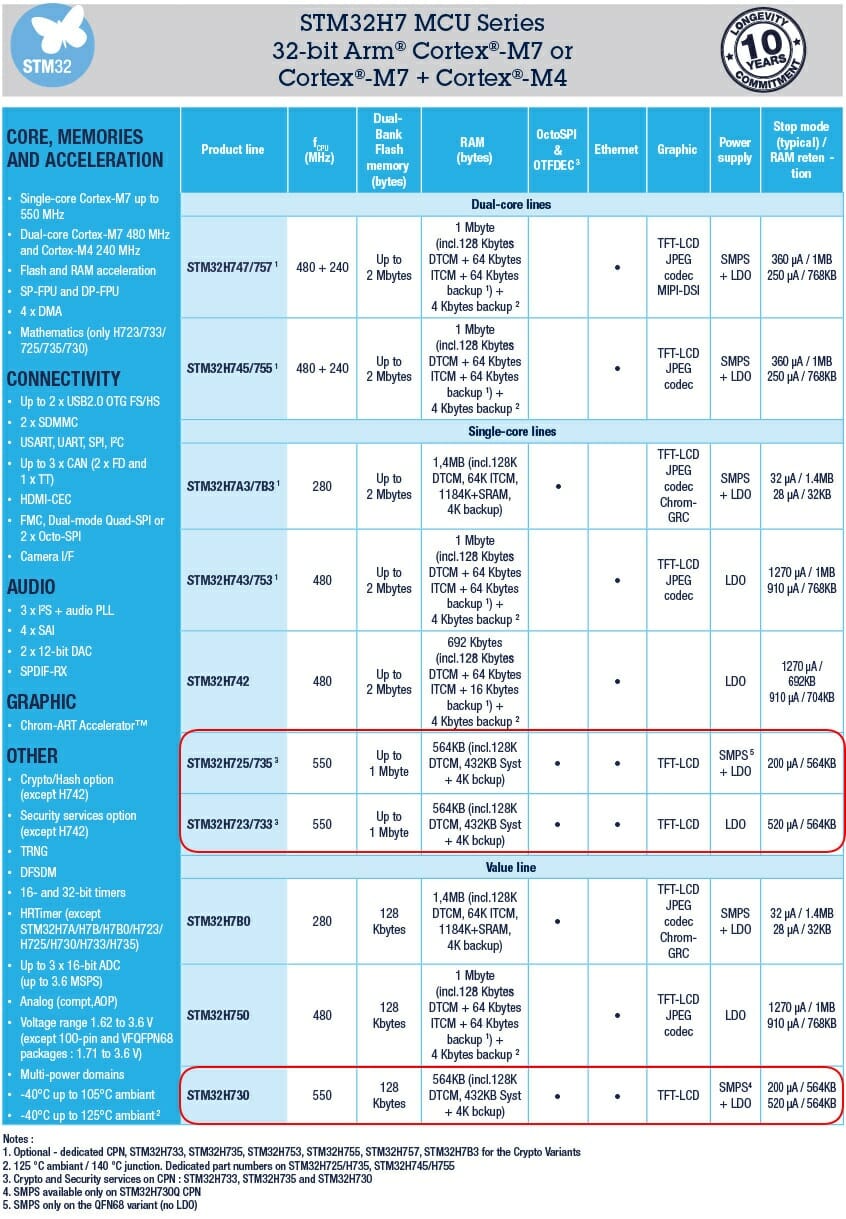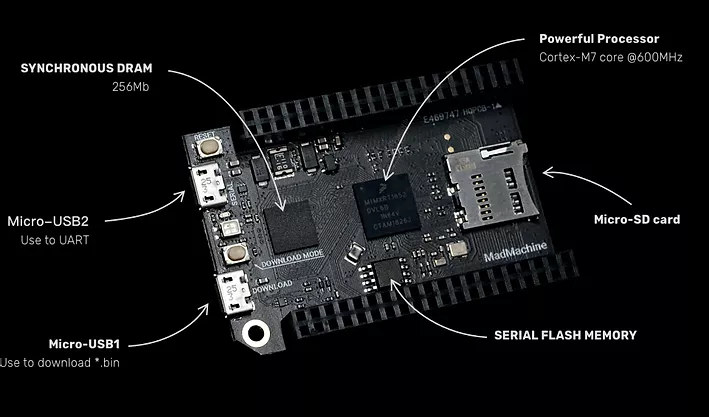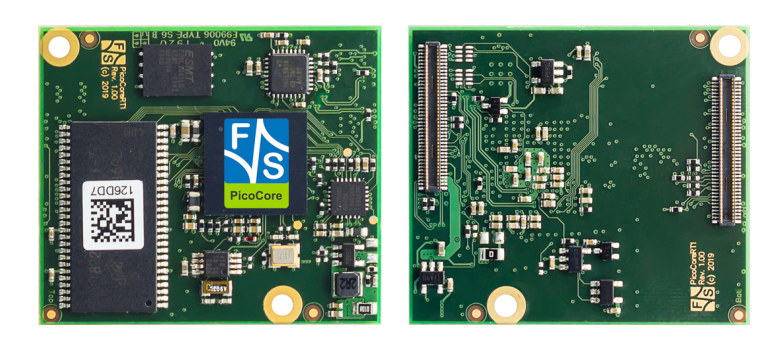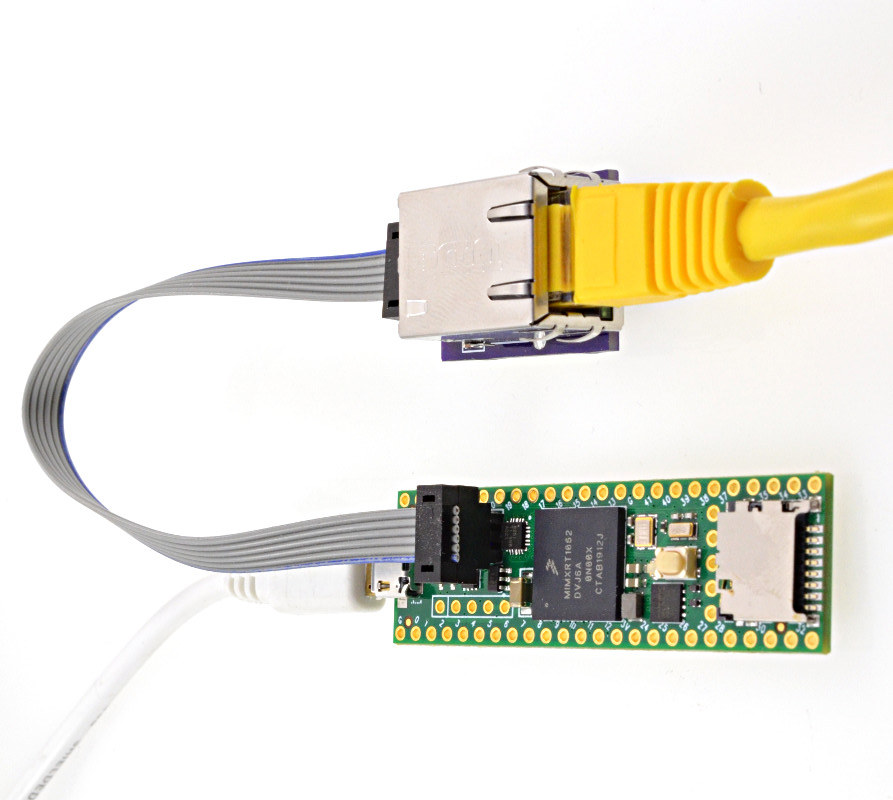TQ Embedded (aka TQ) has just announced the availability of the TQMa117xL system-on-chip module based on NXP i.MX RT1170 crossover processor family, and as well as MBa117xL single board computer (SBC) based on the 31×31 mm module. TQMa117xL’s small size has been achieved thanks to a 277-pad LGA design, with the module still integrating LP-SDRAM, Quad-SPI NOR flash and EPROM, a PMIC, as well as an optional security chip. TQMa117xL i.MX RT1170 SoM Specifications: Crossover processor (one or the other) NXP i.MX RT1171 with Cortex-M7 @ up to 1 GHz (Consumer) or 800 MHz (industrial), 1 GbE (AVB) NXP i.MX RT1172 with Cortex-M7 @ 800 MHz/ 1 GHz, graphics accelerators and camera/display interfaces, 1GbE (AVB) NXP i.MX RT1173 with Cortex-M7 @ 800 MHz (industrial only), Cortex-M4 @ 400 MHz, 1GbE (AVB), graphics accelerators and camera/display interfaces, tamper inteface NXP i.MX RT1175 with Cortex-M7 @ 800 MHz / 1 GHz, Cortex-M4 […]
Embedded Artists launches 1GHz NXP i.MX RT1176 Crossover MCU module and devkit
Microcontrollers used to be those cute little chips clocked at 8 MHz, but it’s now common to have MCUs clocked at one or two hundred Megahertz, and with Cortex-M7 cores, several hundred Megahertz is now possible, and NXP even pushed the limit to one Gigahertz with their i.MX RT1170 series of Cortex-M7/M4 Crossover MCUs announced over a year ago. Embedded Artists has now made a computer-on-module and a corresponding devkit based on NXP i.MX 1176 Crossover MCU clocked at one Gigahertz. iMX RT1176 uCOM MCU module delivers up to 6468 Coremarks, comes with up to 32MB SDRAM, 16MB QSPI flash, optional WiFi and Bluetooth, and various peripherals in a tiny 45x42mm form factor. iMX RT1176 uCOM module Specifications: SoC – NXP i.MX RT1176 processor with Cortex-M7 core up to 1 GHz/800MHz (Commercial vs industrial), Cortex-M4 core up to 400/200 MHz, 2MB internal SRAM, 2D GPU with OpenVG 1.1 support and […]
DevEBox STM32H7 Development Boards are made for Factory Automation
When it comes to STMicroelectronics’ STM32H7 series, there are three product lines- Dual-core lines, Single-core lines, and Value lines. ARM Cortex-M7 based – STM32H7 MCU series is capable of delivering 1327 DMIPS/ 3224 CoreMark. These MCUs are designed for factory automation (HMI, process control, power management), connectivity & security (Alarm panel, Wireless Modules). To continue with the growth of the STM32H7 series, we have China-based MCUdev DevEBox’s STM32H7XX-M development boards taking a single-core line and a value line module. The two STM32H7XX-M development boards use STM32H743VIT6 and STM32H750VBT6 core modules. The STM32H743VIT6 comes from a single core line that offers ARM Cortex-M7 gets up to 2 Mbytes of dual-bank flash memory and 1 Mbytes of RAM. While the STM32H750VBT6 module from the value line is one of the cost-effective STM32H7 devices featuring 128 Kbytes of flash memory. STM32H7 Development Boards These boards from MCUdev measure approximately 40mm x 68mm in […]
New STM32H7 Cortex-M7 MCUs Clock at 550 MHz, Feature Octal SPI Flash and Ethernet Interfaces
STMicro launched STM32H7 single-core Cortex-M7 microcontroller family a while ago, followed by some dual-core Cortex-M7/M4 models, with most clocked up to 480 MHz. The company has now announced five faster parts clocked at up to 550 MHz with STM32H723, STM32H733, STM32H725, STM32H735, and STM32H730 which STMicro claims is “the fastest core speed in the market among MCUs that integrate Flash storage on-chip to run deeply embedded applications”. The embedded flash storage is important, as you may now NXP i.MX RT1170 Cortex-M7/M4 crossover processor can reach up to 1 GHz but does not include flash storage. Key differences in STM32H7 550 Mhz MCUs We’ve highlighted the five new microcontrollers in the table above, and beside the higher 550 MHz frequency delivering 2778 CoreMark and 1177 DMIPS, we can see those are the only parts that support both OctoSPI flash and Ethernet, and all five parts are designed for HMI applications with […]
SwiftIO Arm Cortex-M7 MCU Board Targets Apple Swift Programming Language
Swift programming language has been developed by Apple for iOS, iPadOS, macOS, watchOS, tvOS, and Linux. The programming language works with Apple’s Cocoa and Cocoa Touch frameworks, as well as existing Objective-C code written for Apple products. MadMachine has now created an Arm Cortex-M7 development board, named SwiftIO, specifically designed for Swift programming language through MadMachine IDE and SwiftIO framework. SwiftIO hardware specifications: SoC – NXP i.MX RT1052 Arm Cortex-M7 Crossover Processor @ 600MHz System Memory – 32 MB SRAM Storage – MicroSD card slot supporting standard and high capacity SD cards USB – 1x Micro USB connector for power, 1x Micro USB connector for serial communication Expansion – 2x 46 GPIO headers with 12x 12-bit analog to digital (ADC) converters, 4x UART, 2x CAN, 2x IIC, 2x SPI, 14x PWM Misc – On-board RGB LED, download and reset buttons Power Supply – 5V via Micro USB port Dimensions – […]
PicoCore RT1 System-on-Module Runs FreeRTOS on NXP i.MX RT1050 Crossover Processor
F&S Elektronik Systeme PicoCore RT1 is a System-on-Module powered by NXP i.MX RT1050 crossover processor designed to offer the real-time capabilities of microcontrollers and the performance of application processors thanks to an Arm Cortex-M7 core clocked at up to 600 MHz. The 40×35 mm module is also equipped with 32MB SDRAM, 256MB “high-reliability QSPI NOR flash, and 16KB EEPROM, and offers various interfaces including Ethernet, RGB LCD, and USB via board-to-board connectors. PicoCore RT1 (V1) SoM specifications: SoC – NXP i.MX RT1050 Arm Cortex-M7 processor @ up to 600 MHz with 32KB L2 cache, 2D graphics accelerator System Memory – 32MB SDRAM Storage – 256MB QSPI Flash, 16KB EEPROM; optional NAND flash 2x 80-pin board-to-board connector with Storage – SD Card Display – 16-bit RG interface, analog resistive and PCAP touch via I2C Networking – 1x 10/100M Ethernet Audio – Line-In, Line-Out, microphone, headphone, I2S USB – 1x USB 2.0 […]
Teensy 4.1 Board Gets Longer for Ethernet, MicroSD Slot, and More GPIOs
What comes after Teensy 4.0? Teensy 4.1. The new version of the Arduino compatible board is powered by the same NXP i.MX RT1062 Cortex-M7 crossover processor clocked at 600 MHz, but about doubling in length in order to add a 10/100 Mbit Ethernet PHY, a MicroSD card slot, and offer more I/Os. Teensy 4.1 also increases flash memory to 8 MB (vs 2 MB for Teensy 4.0), and the USB hot-plugging power management circuitry needed to plug a USB device via a USB host cable. Teensy 4.1 specifications: SoC – NXP i.MX RT1062 Arm Cortex-M7 processor at 600 MHz with 1024KB RAM (512KB is tightly coupled), Storage – 8 MB serial flash (64KB reserved for recovery & EEPROM emulation), MicroSD Socket, footprints for 2x extra QSPI chips such as flash or 8MB PSRAM chip USB – 1x micro USB port for power and programming Networking – 6-pin Ethernet header via […]
QEMU 5.0 Supports Recent Armv8.x Features, Cortex-M7 CPU, Host Directory Access, and More
QEMU (Quick EMUlator) is an open-source emulator that’s great to run programs on various architectures such as Arm, RISC-V, and many others when you don’t own proper hardware. The developers have now released QEMU 5.0.0 will plenty of new features and such as support for Armv8.1 to Armv8.4 architectures, Arm Cortex-M7 processor, various changes to MIPS, PowerPC, RISC-V, s390… architectures, support for accessing a directory on the host filesystem from the guest using virtiofsd and more. There have been over 2800+ commits from 232 developers, so the list of changes to too long to write here, but some of the highlights include: Support for passing host filesystem directory to guest via virtiofsd Support for ARMv8.1 VHE/VMID16/PAN/PMU, ARMv8.2 UAO/DCPoP/ATS1E1/TTCNP, ARMv8.3 RCPC/CCIDX, ARMv8.4 PMU/RCPC Added ARM Cortex-M7 CPU support New Arm boards: tacoma-bmc, Netduino Plus 2, and Orange Pi PC Allwinner SoC model now wires up the USB ports TPM support for […]


